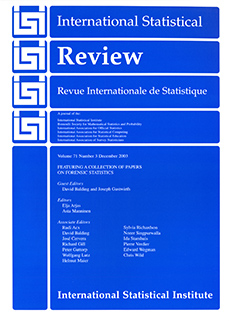Abstract
Disparate impact cases concern the potential adverse effect seemingly neutral employment practices, such as passing a pre-employment test or possessing a fixed level of education, have on minority applicants. Their purpose is to eliminate discrimination by subterfuge, i.e., imposing a requirement that eliminates many minority individuals who could do the job but who do not meet the requirement. When a significantly higher fraction of applicants from minority groups fail the requirement compared to majority applicants, the requirement needs to be shown to be job-related. Statistical techniques used at the various stages of a disparate impact claim are described. Properties of the expectancy curve, which describes the utility of a pre-employment test and helps in defining a band of scores defining "equivalently skilled" applicants are discussed.
Citation
Joseph L. Gastwirth. Weiwen Miao. Gang Zheng. "Statistical Issues Arising in Disparate Impact Cases and the Use of the Expectancy Curve in Assessing the Validity of Pre-Employment Tests." Internat. Statist. Rev. 71 (3) 565 - 580, December 2003.
Information




